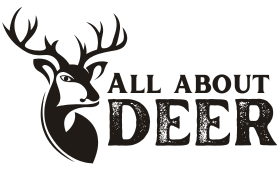The Schomburgk's deer is a species that adds charm to the wilderness. These remarkable creatures possess distinctive qualities that make them a true marvel of the animal kingdom. Join us as we dive into the captivating world of Schomburgk's deer.
Table of Contents
Species Data
- Class: Mammalia
- Order: Artiodactyla
- Family: Cervidae
- Scientific Name: Rucervus schomburgki
- Life Span: 15-20 years
- Height: 110-130 cm (43-51 inches)
- Weight: 300-400 pounds (136-181 kilograms)
Description
Schomburgk's deer, also known as the brow-antlered deer, are large, herbivorous mammals with impressive antlers. They are renowned for their striking appearance and unique brow-like antlers that distinguish them from other deer species.
Appearance
These deer are characterized by their reddish-brown fur and distinctive brow-shaped antlers. Their graceful stature and striking features make them a sight to behold in their natural habitat.
Behavior
Schomburgk's deer are typically crepuscular, meaning they are most active during dawn and dusk. They are known for their cautious and alert nature, often seen in small groups or as solitary individuals.
Habitat
These magnificent deer are native to the grasslands and wetlands of Southeast Asia, particularly in Cambodia and Vietnam. They thrive in areas with abundant vegetation and water sources.
Diet and Nutrition
Schomburgk's deer are herbivores, primarily feeding on grasses, aquatic plants, and various vegetation. Their specialized digestive system allows them to extract nutrients from tough plant materials.
Mating Habits
Schomburgk's deer typically breed during the late fall or early winter. Female deer, known as does, give birth to a single fawn after a gestation period of approximately 240 days.
Mating Behavior
- Reproduction Season: Late fall to early winter
- Pregnancy Duration: Approximately 240 days
- Baby Carrying: Female deer care for their fawns
- Independent Age: Fawns become independent at around 6-8 months
- Female Name: Doe
- Male Name: Buck
- Baby Name: Fawn
5 Fun Facts for Kids
- Schomburgk's deer are named after the 19th-century German naturalist Sir Richard Schomburgk, who first documented them.
- Their distinctive brow-shaped antlers are a unique feature not found in other deer species.
- These deer are excellent swimmers and are often found in marshy areas.
- They play a crucial role in their ecosystem by helping maintain plant populations through grazing.
- Schomburgk's deer are known for their keen sense of hearing and can detect the slightest sounds in their environment.

